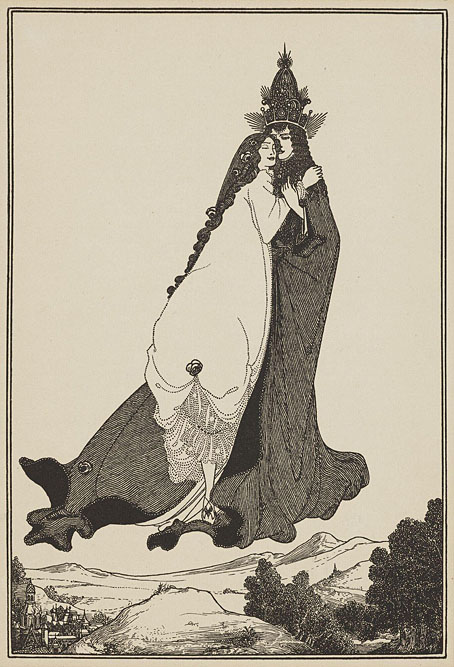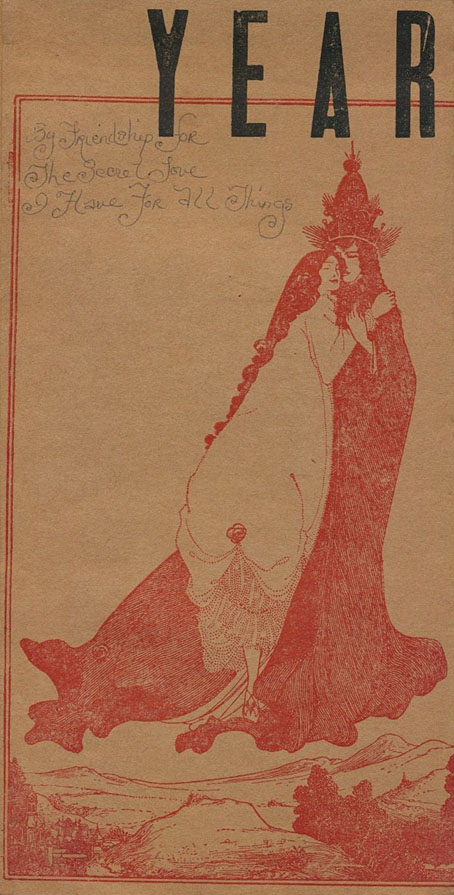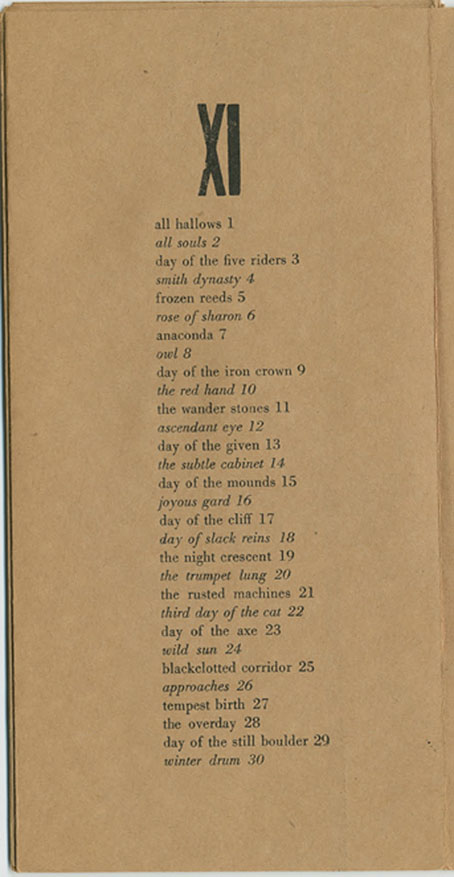
The Ascension of St Rose of Lima (1896) by Aubrey Beardsley.
There’s something about the idea of renaming the calendar that I find very attractive even if this is only workable on a personal level. When the Gregorian calendar is a reinvention of the Roman calendar based around Christian holidays (and with the days of the week still alluding to Norse gods), it’s easy to feel at liberty to start again.

Year (1962) by Angus MacLise.
The most famous example of calendrical reinvention is the French Republican Calendar which called upon a gathering of scientists, a mathematician and a gardener to rename the months and days of the year. In this system the 29th of July would be “Panic” (ie: the plant Switchgrass) in the month of “Thermidor” which runs from July 19th to August 17th. (For the record, this is the year 221 in French Republic time.) The French Republican Calendar may have been an inspiration for the Pataphysical Calendar invented by Jarryites (or Ubuists) which is also French, and a sight more complicated:
The pataphysical era (EP) started on 8 September 1873 [Alfred Jarry’s birthday.] The week starts on a Sunday. Every 1st, 8th, 15th and 22nd is a Sunday and every 13th day of a month falls on a Friday. Each day is assigned a specific name or saint. For example, the 27 Haha (1 November vulg.) is called French: Occultation d’Alfred Jarry or the 14 Sable (14 December vulg.) is the day of French: Don Quichote, champion du monde.
The year has a total of 13 months each with 29 days. The 29th day of each month is imaginary with two exceptions:
• the 29 Gidouille (13 July vulg.) is always non-imaginary
• the 29 Gueules (23 February vulg.) is non-imaginary during leap years
So today, July 29th, would be 16th Tatane (“Shoe” or “Being worn out”), Transfiguration de St V. van Gogh, transmutateur, in the Pataphysical Year 140.

Month XI from Year by Angus MacLise.
After the Pataphysical Calendar, Year by percussionist/composer/poet Angus MacLise (1938–1979) comes as a relief. This is a poetic renaming of the days of the year which MacLise published in a now very rare booklet edition in 1962. I’ve known about this for years but still haven’t seen a full text so it was a surprise to discover that the cover illustration was The Ascension of St Rose of Lima by Aubrey Beardsley, one of the artist’s later pieces which tends to Catholicism despite being used to illustrate his unfinished erotic novel, Under the Hill. It’s difficult to say why this was chosen by MacLise or his publisher, but it pre-empts the renewed attention that Beardsley’s work received from 1966 on. MacLise’s names for the days are beautifully evocative, and infinitely preferable to the many days which few in this country bother about:
smoke of the shore
day of the inner lid
day of the magic child
day of bessie smith
day of anna
rose over the cities
the fire is a mirror
hrungirs heart
The full text for November and December can be found on this page. If anyone knows of an online source for the full text of MacLise’s Year then please leave a comment. For those with Android phones, there’s a page here offering a Pataphysical Calendar app. Bosse-de-Nage says “Ha ha”.









